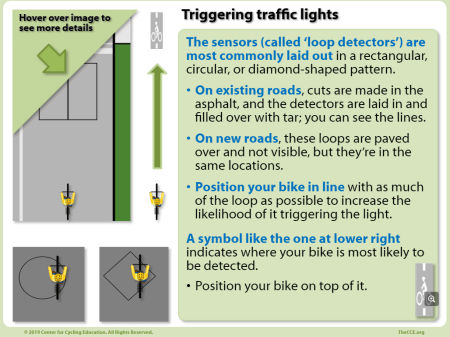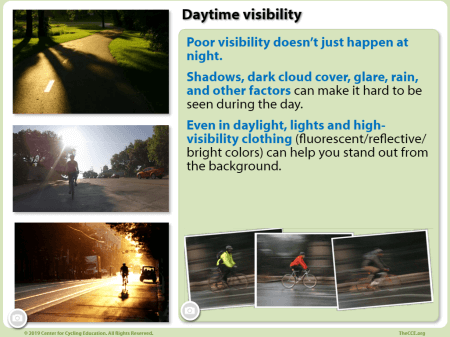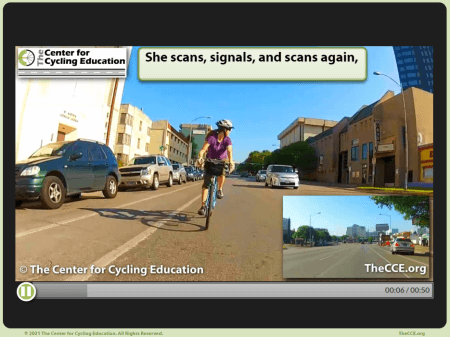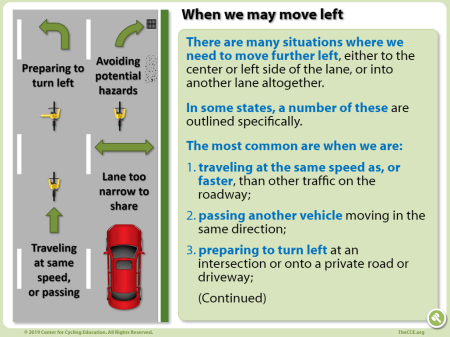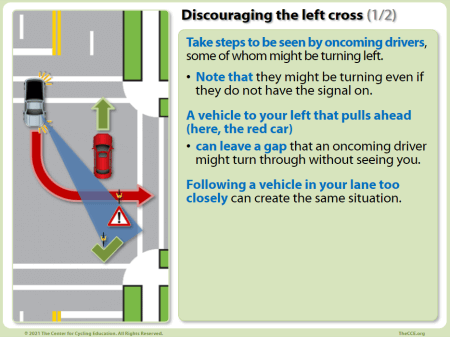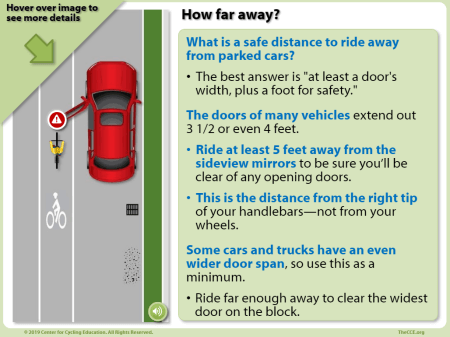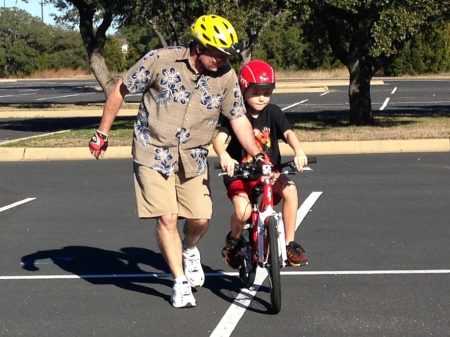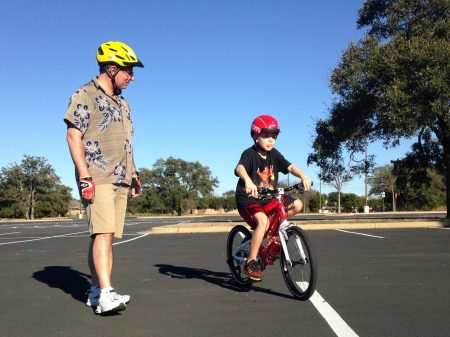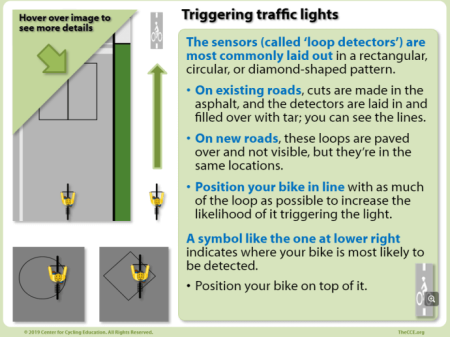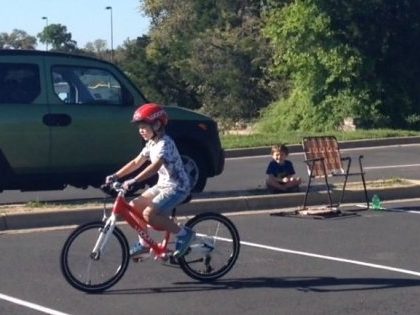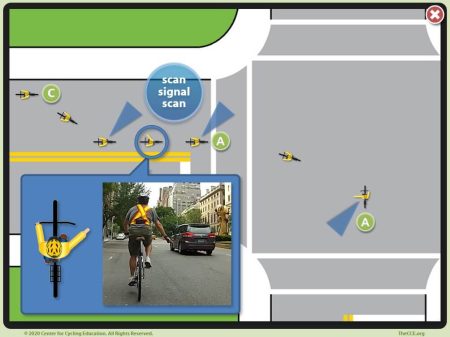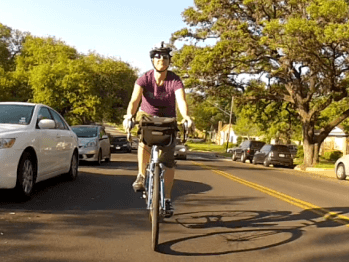See below for the provincial laws that apply to riding your bike in Alberta.

This content is provided by the Province of Alberta via the Canadian Legal Information Institute/ (CANLII). It is being used in accordance with the organization’s terms of use.
Note: Sections of the Act not relating to cyclists/bicycles, pedestrians, or mobility device users have been omitted.
Table of Contents
Links directly below are to sections on this page.
PART 1 — GENERAL ADMINISTRATION [2 – 21]
DIVISION 3 — MUNICIPALITIES AND OTHER AUTHORITIES [13 – 17]
» 13. General powers of municipality
» 14. Private property
PART 3 — MOTOR VEHICLE ADMINISTRATION [51 – 81]
DIVISION 2 — VEHICLES, EQUIPMENT, ACCIDENTS AND REMOVAL OF VEHICLES [65 – 81]
(Note: In sections 11, 69, 70, 71, 72 and 169(2)(f), a reference to a vehicle is a reference to a vehicle other than a bicycle.)
» 69. Duty of driver, etc. re accident
» 70. Reports of peace officers re accidents
» 71. Reports of drivers re accidents
» 72. Place of offence re accident report
PART 5 — GENERAL OPERATION OF VEHICLES [106 – 116]
DIVISION 2 — OPERATION OF VEHICLES [111 – 116]
» 111. Observance of Rules of the Road
» 115. Prohibited operation of vehicles, etc.
» 115.1. Cellular telephones, electronic devices, etc.
» 115.2. Display screen visible to driver prohibited
» 115.3. Global positioning system
» 115.4. Prohibited activities
PART 8 — ENFORCEMENT, RIGHTS, REMEDIES AND OBLIGATIONS [157 – 188]
DIVISION 3 — PEACE OFFICERS [166 – 178]
» 166. Stopping for peace officer
» 167. Production of documents
ALBERTA TRAFFIC SAFETY ACT
Chapter T-6
Interpretation
1(1) In this Act,
(i) “cycle” means a bicycle, power bicycle, motorcycle or moped;
(k) “driver” means a person who is driving or is in actual physical control of a vehicle;
(l) “driving” or “drive” includes having the care or control of a vehicle;
(m) “emergency vehicle” means
(i) a vehicle operated by a police service as defined in the Police Act;
(ii) a fire?fighting or other type of vehicle operated by the fire protection service of a municipality;
(iii) an ambulance operated by a person or organization providing ambulance services;
(iv) a vehicle operated as a gas disconnection unit of a public utility;
(v) a vehicle designated by regulation as an emergency response unit;
(p) “highway” means any thoroughfare, street, road, trail, avenue, parkway, driveway, viaduct, lane, alley, square, bridge, causeway, trestleway or other place or any part of any of them, whether publicly or privately owned, that the public is ordinarily entitled or permitted to use for the passage or parking of vehicles and includes
(i) a sidewalk, including a boulevard adjacent to the sidewalk,
(ii) if a ditch lies adjacent to and parallel with the roadway, the ditch, and
(iii) if a highway right of way is contained between fences or between a fence and one side of the roadway, all the land between the fences, or all the land between the fence and the edge of the roadway, as the case may be, but does not include a place declared by regulation not to be a highway;
(v) “mobility aid” means a device used to facilitate the transport, in a normal seated orientation, of a person with a physical disability;
(x) “motor vehicle” means
(i) a vehicle propelled by any power other than muscular power, or
(ii) a moped,
but does not include a bicycle, a power bicycle, an aircraft, an implement of husbandry or a motor vehicle that runs only on rails;
(z) “municipality” means a municipality as defined in the Municipal Government Act and includes a Metis settlement;
(ff) “peace officer” means
(i) a police officer under the Police Act;
(ii) a member of a police service under the Police Act;
(ii.1) an investigator designated under section 2.1;
(iii) except in sections 39, 39.1, 39.2, 88, 88.1 and 90, a peace officer appointed under the Peace Officer Act for the purposes of this Act;
(iv) a park warden appointed under the Parks Canada Agency Act (Canada);
(v) a conservation officer appointed under section 1 of Schedule 3.1 to the Government Organization Act;
(vi) a forest officer appointed under the Forests Act;
(vii) a wildlife officer appointed under the Wildlife Act;
(gg) “pedestrian” means
(i) a person on foot, or
(ii) a person in or on a mobility aid,
and includes those persons designated by regulation as pedestrians;
(nn) “roadway” means that part of a highway intended for use by vehicular traffic;
(pp) “sidewalk” means that part of a highway especially adapted to the use of or ordinarily used by pedestrians, and includes that part of a highway between
(i) the curb line, or
(ii) where there is no curb line, the edge of the roadway,
and the adjacent property line, whether or not it is paved or improved;
(ss) “traffic control device” means any sign, signal, marking or device placed, marked or erected under the authority of this Act for the purpose of regulating, warning or guiding traffic;
(tt) “traffic control signal” means a traffic control device, whether manually, electrically or mechanically operated, by which traffic is directed to stop and to proceed;
(ww) “vehicle”, other than in Part 6, means a device in, on or by which a person or thing may be transported or drawn on a highway and includes a combination of vehicles but does not include a mobility aid.
(Note: In sections 11, 69, 70, 71, 72 and 169(2)(f), a reference to a vehicle is a reference to a vehicle other than a bicycle.)
(10) Where a highway is located both within an urban area and outside an urban area and this Act refers to the highway
(a) as a highway in an urban area, that reference is a reference to that portion of the highway that is located in an urban area, or
(b) as a highway outside an urban area, that reference is a reference to that portion of the highway that is not located in an urban area.
(11) In this Act, a reference to the Rules of the Road is a reference to the regulations made under section 112.
(12) Any reference in this Act to a sign erected means a sign erected under the authority of this Act.
(13) Any reference in this Act to “driver’s vehicle” means the vehicle that a driver is driving whether or not that person is the owner of the vehicle.
PART 1 — GENERAL ADMINISTRATION [2 – 21]
DIVISION 3 — MUNICIPALITIES AND OTHER AUTHORITIES [13 – 17]
General powers of municipality
13
(1)
Subject to this Act and the Dangerous Goods Transportation and Handling Act, the council of a municipality may, with respect to a highway under its direction, control and management, make bylaws that are not inconsistent with this Act, doing the following:
(a) governing the use of highways;
(b) governing the parking of vehicles;
(f) classifying motor vehicles and other vehicles and pedestrians for any purposes involving the use of streets, lanes and other public places;
(h) governing the turning of vehicles at intersections;
(i) governing the encumbering of highways;
(k) governing the licensing of bicycles;
(l) governing the impounding of bicycles, skateboards and similar devices;
(m) governing parades and processions;
(n) governing closing or restricting the use of a highway;
(x) prescribing or otherwise providing for penalties with respect to the contravention of a bylaw made under this Division.
(2) Where permitted under a regulation, a municipality may, subject to any term or condition prescribed by the regulation, make bylaws under which the municipality may provide that the regulation does not apply in whole or in part to or within the municipality.
Private property
14 Subject to this Act and the Provincial Offences Procedure Act, the council of a municipality may make bylaws,
(a) with respect to privately owned property that is located within the municipality to which vehicles driven by members of the public generally have access,
(i) governing parking on the property without the permission or authorization of the owner of the property or a person having possession or control of the property;
(ii) governing the parking of vehicles in manufactured home communities;
(iii) governing the establishment and use of parking places that are for the exclusive use of persons with disabilities who display on their vehicles a disabled placard or licence plate that is issued or recognized by the Registrar;
(iv) prescribing speed limits in respect of lanes or other thoroughfares used by vehicles;
(b) with respect to private property that is located within the municipality to which vehicles driven by members of the public generally do not have access but on which the owner of the property or a person having possession or control of the property may park or otherwise keep vehicles, prohibiting
(i) the parking of vehicles on that property without the permission or authorization of that person;
(ii) the parking of vehicles so that the access to that property is denied or otherwise restricted;
(c) with respect to a vehicle parked or driven in contravention of a bylaw made under this section,
(i) governing the issuing of tags or tickets or other documents;
(ii) governing the placing of tags, tickets or other documents on vehicles;
(iii) governing, subject to sections 77 to 79, the removal and impounding of vehicles;
(iv) providing for the laying of an information and complaint.
Prohibitions and offences
15
(1)
The authority to make a bylaw under this Act governing or respecting any matter includes the authority to make prohibitions in respect of that matter.
(2) The authority to make a bylaw under this Act includes the authority to specify that a contravention of or a failure to comply with the bylaw is an offence.
Restriction of powers
16 Unless specifically permitted by this Act or any other Act, a council of a municipality does not have any power to make a bylaw that does one or more of the following:
(a) imposes any tax, fee, licence or permit respecting the use of highways by pedestrians or vehicles;
(b) excludes pedestrians or vehicles generally from using highways;
(c) prohibits the use of highways by pedestrians or vehicles;
(d) affects in any way the registration or numbering of motor vehicles.
PART 3 — MOTOR VEHICLE ADMINISTRATION [51 – 81]
DIVISION 2 — VEHICLES, EQUIPMENT, ACCIDENTS AND REMOVAL OF VEHICLES [65 – 81]
Duty of driver, etc. re accident
(Note: In sections 11, 69, 70, 71, 72 and 169(2)(f), a reference to a vehicle is a reference to a vehicle other than a bicycle.)
69
(1)
Where an accident in which a vehicle is involved occurs on a highway, the driver or other person in charge of any vehicle that was directly or indirectly involved in the accident shall
(a) remain at the scene of the accident or, if the person has left the scene of the accident, immediately return to the scene of the accident unless otherwise directed by a peace officer,
(b) render all reasonable assistance, and
(c) produce in writing to anyone sustaining loss or injury, to any peace officer and to any witness all or such of the following information as is requested:
(i) that person’s name and address;
(ii) the number of that person’s operator’s licence;
(iii) the name and address of the registered owner of the vehicle;
(iv) the licence plate number of the vehicle;
(v) a financial responsibility card issued in respect of that vehicle.
(2) The driver of a vehicle that
(a) is involved in an accident with an unattended vehicle shall stop at the scene of the accident and shall forthwith or as soon after the accident as is practicable
(i) locate and notify the owner or person in charge of the unattended vehicle of the name and address of the driver, the number of the driver’s operator’s licence and the licence plate number of the vehicle that was involved in the accident with the unattended vehicle, or
(ii) leave in a conspicuous place in or on the unattended vehicle a written notice giving the name and address of the driver, the number of the driver’s operator’s licence and the licence plate number of the vehicle that was involved in the accident with the unattended vehicle,
or
(b) is involved in an accident resulting in damage to property on or adjacent to a highway shall forthwith or as soon after the accident as is practicable take reasonable steps to locate and notify the owner or person in charge of the property of the fact and of the name and address of the driver, the number of the driver’s operator’s licence and the licence plate number of the vehicle.
(3) If the driver of a vehicle is incapable of providing the information required by subsection (1) or (2) and there is another occupant of the vehicle capable of providing the information, the occupant shall provide the information required to be provided by the driver.
(4) If the information has not been provided under subsection (1), (2) or (3) and the driver or occupant of the vehicle is not the owner of the vehicle, the owner shall forthwith on determining that that owner’s vehicle has been involved in an accident provide the information required under those subsections.
(5) If the driver of a vehicle is alone at the time of an accident, is the owner of the vehicle and is incapable of providing the information required by subsection (1) or (2), that person shall provide the information forthwith after becoming capable of doing so.
(6) When a vehicle that has been involved in an accident is damaged to the extent that it cannot be moved under its own power, the registered owner or the driver of the vehicle shall, after complying with subsection (1) or (2), forthwith make arrangements for the motor vehicle to be removed from the highway.
(7) Notwithstanding subsection (6), if the registered owner or the driver of the vehicle fails to make or is incapable of making arrangements to move the vehicle, a peace officer
(a) may make the arrangements to move the vehicle on the owner’s or driver’s behalf, and
(b) on making arrangements to move the vehicle, shall notify the registered owner of the vehicle of the disposition of the vehicle.
(8) If arrangements to move a vehicle have been made by a peace officer pursuant to subsection (7), the motor vehicle is deemed to be an abandoned motor vehicle.
Reports of peace officers re accidents
(Note: In sections 11, 69, 70, 71, 72 and 169(2)(f), a reference to a vehicle is a reference to a vehicle other than a bicycle.)
70 A peace officer shall, in the form and the manner prescribed by regulation, provide to the Registrar reports respecting accidents involving vehicles.
Reports of drivers re accidents
(Note: In sections 11, 69, 70, 71, 72 and 169(2)(f), a reference to a vehicle is a reference to a vehicle other than a bicycle.)
71
(1)
A driver of a vehicle involved in an accident shall, in the form and manner prescribed by regulation, provide a report of the accident to
(a) a peace officer having jurisdiction where the accident occurred, or
(b) an employee of a police service having jurisdiction where the accident occurred who is authorized to receive those reports.
(2) If the driver is incapable of making the report required by subsection (1) and there is another occupant of the vehicle capable of making the report, the occupant shall make the report required to be made by the driver.
(3) If a report has not been made under subsection (1) or (2) and the driver or occupant is not the owner of the vehicle, the owner shall make the report forthwith after learning of the accident.
(4) If the driver is alone, is the owner of the vehicle and is incapable of making the report required by subsection (1), the driver shall make the report forthwith after becoming capable of making it.
Place of offence re accident report
(Note: In sections 11, 69, 70, 71, 72 and 169(2)(f), a reference to a vehicle is a reference to a vehicle other than a bicycle.)
72 In a prosecution for failure to provide information as required under section 69 or 126 or to make a report as required by section 70 or 71 or to provide information under the regulations with respect to accidents, the place of an offence is the place where the accident occurred.
Part 5 – General Operation of Vehicles
Division 2 – Operation of Vehicles
Observance of Rules of the Road
111 A driver of a vehicle and any other person using a highway shall, insofar as applicable, obey the Rules of the Road, except when otherwise
(a) instructed by any applicable traffic control device, or
(b) directed by a peace officer.
Prohibited operation of vehicles, etc.
115
(1)
For the purposes of this section, a driver of a vehicle is driving carelessly if that driver drives the vehicle
(a) without due care and attention, or
(b) without reasonable consideration for persons using the highway.
(2) A person shall not do any of the following:
(a) except where otherwise provided for under this Act, drive a vehicle in a manner contrary to the Rules of the Road or regulations governing the operation of vehicles;
(b) drive a vehicle on a highway in a manner that constitutes driving carelessly;
(c) drive a vehicle on a highway in a race unless authorized pursuant to a permit issued under subsection (3);
(d) drive a vehicle on a highway on a bet or wager;
(e) perform or engage in any stunt or other activity that is likely to distract, startle or interfere with users of the highway;
(f) drive a vehicle so as to perform or engage in any stunt or other activity on a highway that is likely to distract, startle or interfere with other users of the highway;
(g) drive a non?repairable vehicle on a highway;
(h) drive a salvage motor vehicle on a highway unless it is being operated for the purposes of conducting a road test under the regulations;
(i) where that person is the driver of a vehicle, permit any person, animal or thing to occupy the front seat of the vehicle in such a manner so as to impede the driver in the free and uninterrupted access to and use of the steering wheel, brakes and other equipment required to be used for the safe operation of the vehicle;
(j) where that person is the driver of a vehicle, permit any person, animal or thing in the vehicle to cause any obstruction to the driver’s clear vision in any direction;
(k) ride in a position in a vehicle that interferes with the driver’s control over the driving mechanism of the vehicle or that obstructs the driver’s clear vision in any direction;
(l) where the person is the driver of a vehicle, exchange places with any other person when the vehicle is in motion;
(m) exchange places with the driver when the vehicle is in motion;
(n) operate an over?dimensional vehicle on a highway other than in accordance with the terms and conditions specified in a permit or under this Act;
(p) drive a vehicle on a highway at a speed that is greater than the maximum speed limit established or prescribed for that highway under
(i) this Act,
(ii) the Government Property Traffic Act (Canada), or
(iii) the National Parks Act (Canada);
(p.1) drive a vehicle on a portion of a highway that is under construction or repair or is in a state of disrepair at a speed that is greater than the maximum speed limit established or prescribed under section 108(1)(g) for that portion of highway;
(p.2) drive a vehicle on a portion of a highway at a speed that is greater than the maximum speed limit established or prescribed under section 108(1)(g) for that portion of highway where there are persons present on the highway who are constructing or repairing that portion of highway or who are directing traffic in connection with the construction or repair of that portion of highway;
(q) drive a vehicle on a highway at a speed that is less than the minimum speed limit established or prescribed for that highway under this Act;
(r) where a maximum speed limit is established or prescribed under this Act for a highway with respect to a period of time, drive a vehicle on a highway during that period of time at a speed that is greater than the maximum speed limit established or prescribed for that highway for that period of time;
(s) where a minimum speed limit is established or prescribed under this Act for a highway with respect to a period of time, drive a vehicle on a highway during that period of time at a speed that is less than the minimum speed limit established or prescribed for that highway for that period of time;
Cellular telephones, electronic devices, etc.
115.1
(1)
Subject to this section and the regulations made under section 115.5, no individual shall drive or operate a vehicle on a highway while at the same time
(a) holding, viewing or manipulating a cellular telephone, radio communication device or other communication device that is capable of receiving or transmitting telephone communication, electronic data, electronic mail or text messages, or
(b) holding, viewing or manipulating a hand?held electronic device or a wireless electronic device.
(2) An individual may drive or operate a vehicle on a highway while using a cellular telephone or radio communication device in hands?free mode.
(3) Subsection (1)(a) does not apply to
(a) the use of a 2?way radio communication device, only for the purposes set out in the regulation, by an individual driving or operating an escort, pilot or trail vehicle who is required by regulation under this Act to maintain 2?way radio communication, or the use of a cellular telephone or other communication device by that individual for those purposes when 2?way radio communication is not functional or is unavailable,
(b) the use of a 2?way radio communication device, only for the purpose of maintaining communication with the individual’s employer, by an individual driving or operating a vehicle who is required by the individual’s employer to maintain 2?way radio communication while the individual is acting within the scope of the individual’s employment, or the use of a cellular telephone or other communication device by that individual for that purpose when 2?way radio communication is not functional or is unavailable,
(c) the use of a 2?way radio communication device, only for the purpose of participating in a search, rescue or emergency management situation, by an individual driving or operating a vehicle, or the use of a cellular telephone or other communication device by that individual for that purpose when 2?way radio communication is not functional or is unavailable, or
(d) the use of a cellular telephone or other communication device, only for the purpose of contacting an emergency response unit, by an individual driving or operating a vehicle.
(4) Subsection (1) does not apply to an individual driving or operating an emergency vehicle while the individual is acting within the scope of the individual’s employment.
(5) Subsection (1) does not apply in respect of a vehicle that
(a) is not on a highway, or
(b) is parked in a manner specified in a regulation under this Act.
Display screen visible to driver prohibited
115.2
(1) Subject to this section and the regulations made under section 115.5, no individual shall drive or operate a vehicle on a highway if the display screen of a television, computer or other device in the vehicle is activated and is visible to the individual.
(2) Subsection (1) does not apply in respect of the display screen of
(a) a global positioning system navigation device while it is being used to obtain navigation information in accordance with section 115.3,
(b) a cellular telephone or radio communication device being used in hands?free mode,
(c) a logistical transportation tracking system device that is used to track vehicle location, driver status or the delivery of packages or other goods for commercial purposes,
(d) a dispatch system used for the transportation of passengers,
(e) a collision avoidance system device while it is being used to provide collision avoidance information, or
(f) an instrument, gauge, device or system that is used to provide information to the individual regarding the status of various systems or the location of the vehicle.
(3) Subsection (1) does not apply to an individual driving or operating an emergency vehicle while the individual is acting within the scope of the individual’s employment.
Global positioning system
115.3
(1) Subject to this section and the regulations made under section 115.5, no individual shall use a global positioning system navigation device for navigation purposes while driving or operating a vehicle on a highway.
(2) An individual may use a global positioning system navigation device while driving or operating a vehicle on a highway if the system
(a) is programmed before the individual begins to drive or operate the vehicle, or
(b) is used in a voice?activated manner.
(3) If a global positioning system navigation device is portable, an individual may use the system while driving or operating a vehicle on a highway if, in addition to the requirements of subsection (2), the system
(a) is not held in the individual’s hand, and
(b) is securely affixed to the vehicle in a manner that does not interfere with the safe operation of the vehicle.
Prohibited activities
115.4
(1)
Subject to this section and the regulations made under section 115.5, no individual shall drive or operate a vehicle on a highway while engaged in an activity that distracts the individual from the operation of the vehicle, including but not limited to
(a) reading or viewing printed material located within the vehicle other than an instrument, gauge, device or system referred to in section 115.2(2)(f),
(b) writing, printing or sketching,
(c) engaging in personal grooming or hygiene, and
(d) any other activity that may be prescribed in the regulations.
(2) Subsection (1) does not apply in respect of a vehicle that
(a) is not on a highway, or
(b) is parked in a manner specified in a regulation made under this Act.
Division 3 – Peace Officers
Stopping for peace officer
166
(1)
For the purposes of administering and enforcing this Act or a bylaw, a peace officer may
(a) with respect to a vehicle,
(i) signal or direct a driver of a vehicle to stop the vehicle, and
(ii) request information from the driver of the vehicle and any passengers in the vehicle,
and
(b) with respect to a pedestrian using or located on a highway, request information from that pedestrian.
(2) When signalled or directed to stop by a peace officer who is readily identifiable as a peace officer, a driver of a vehicle shall
(a) forthwith bring the vehicle to a stop,
(b) forthwith furnish to the peace officer any information respecting the driver or the vehicle that the peace officer requires, and
(c) remain stopped until permitted by the peace officer to leave.
(3) At the request of a peace officer who is readily identifiable as a peace officer, a passenger in a vehicle who is acting in a manner that is contrary to this Act or a bylaw shall forthwith furnish to the peace officer the passenger’s name and address.
(4) At the request of a peace officer who is readily identifiable as a peace officer, a pedestrian using or located on a highway in a manner contrary to this Act or a bylaw shall forthwith furnish to the peace officer the pedestrian’s name and address.
Production of documents
167
(1)
On the request of a peace officer, a person driving or otherwise having the care or control of a motor vehicle or trailer shall produce to the peace officer for inspection the following documents as requested by the peace officer:
(a) the person’s subsisting operator’s licence;
(b) the subsisting certificate of registration issued in respect of the motor vehicle and any trailer attached to the motor vehicle and, in the case of a vehicle in a prescribed class of commercial vehicles, either the subsisting certificate of registration or a copy of the certificate of registration;
(c) the subsisting financial responsibility card issued in respect of that motor vehicle;
(d) the customs permit issued in respect of the motor vehicle where a customs permit has been obtained in respect of the motor vehicle’s entry into Canada.
(2) On the request of a peace officer a person who is engaged in supervising a student driver in a motor vehicle shall produce to the peace officer for inspection that person’s operator’s licence.
(3) Where a peace officer makes a request under subsection (1)(d), the peace officer shall allow the person to whom the request was made reasonable time within which to produce the document.
(4) Where a peace officer makes a request under subsection (1)(b) or (c), the peace officer shall allow the person to whom the request was made reasonable time within which to produce the document issued in respect of the vehicle if the vehicle
(a) is being operated
(i) with dealer’s licence plates,
(ii) by an appraiser who has custody of the vehicle for the purpose of appraising it, or
(iii) by a person who has custody of the vehicle for the purpose of repairing it,
or
(b) is a newly acquired vehicle being operated with licence plates as allowed under the regulations.
(6) If a person produces to a peace officer a document under this section that is illegible, mutilated, defaced or altered, the peace officer may request that person to produce to a peace officer within a reasonable time a new document or duplicate of the document issued under this Act.
(7) A person who fails to produce to a peace officer a document as requested under subsection (1), (2) or (6) is guilty of an offence.
USE OF HIGHWAY AND RULES OF THE ROAD REGULATION
Alberta Regulation 304/2002
With amendments up to and including Alberta Regulation 241/2018
Current as of December 12, 2018
https://www.qp.alberta.ca/documents/Regs/2002_304.pdf
© Alberta Queen’s Printer, 2002
Definitions
1
(1) In this Regulation,
(a) “Act” means the Traffic Safety Act;
(c) “bicycle” includes any cycle propelled by human muscular power on which a person may ride regardless of the number of wheels that the cycle may have;
(d) “crosswalk” means
(i) that part of a roadway at an intersection included within the connection of the lateral line of the sidewalks on opposite sides of the highway measured from the curbs or, in the absence of curbs, from the edges of the roadway, or
(ii) any part of a roadway at an intersection or elsewhere distinctly indicated for pedestrian crossing by signs or by lines or by other markings on the road surface;
(e) “daytime” means the period commencing one hour before sunrise and ending one hour after the following sunset;
(g) “intersection” means the area embraced within the prolongation or connection of
(i) the lateral curb lines, or
(ii) if there are not any lateral curb lines, the exterior edges of the roadways, of 2 or more highways which join one another at an angle whether or not one highway crosses the other;
(h) “median” means a physical barrier or area that separates lanes of traffic travelling on a highway;
(i) “moped” means a vehicle that
(i) is propelled by an electric motor or an engine that has a displacement of not more than 50 cubic centimetres, and
(ii) is a limited-speed motorcycle under the Motor Vehicle Safety Regulations (Canada) (C.R.C., c. 1038);
(j) “night time” means the period commencing one hour after sunset and ending one hour before the following sunrise;
(k) “one-way highway” means a highway on which traffic is permitted to travel only in one direction but does not include a highway that is divided by a median into 2 separate roadways with the traffic on one roadway travelling in one direction and the traffic on the other roadway travelling in the opposite direction;
(l) “park”, when prohibited, means allowing a vehicle to remain stationary in one place, except
(i) while actually engaged in loading or unloading passengers, or
(ii) when complying with a direction given by a peace officer or traffic control device;
(m) “parking lane” means that portion of a provincial highway between
(i) the edge of the roadway to the right of the direction of traffic, and
(ii) the nearest solid white line, not being the centre line, marked on the roadway;
(n) “pedestrian traffic control signal” means a traffic control signal by which pedestrians are specifically directed to proceed or not to proceed;
(o) “power bicycle” means a vehicle that is a power-assisted bicycle under the Motor Vehicle Safety Regulations (Canada) (C.R.C., c. 1038);
(p) “provincial highway” means a highway designated as a provincial highway pursuant to the Highways Development and Protection Act;
(q) “school bus” means a motor vehicle used primarily for transporting persons to and from a school;
(r) “service road” means a road that runs parallel to a main road and is separated from the main road by a boulevard or curb;
(s) “stop” means
(i) when required, a complete cessation from vehicular movement, and
(ii) when prohibited, any halting even momentarily of a vehicle, whether occupied or not, except when necessary to avoid conflict with other traffic or in compliance with a direction given by a peace officer or traffic control device;
(t) “traffic lane” means
(i) outside an urban area, a longitudinal division of a roadway into a strip of sufficient width to accommodate the passage of a single line of vehicles but does not include a parking lane, and
(ii) inside an urban area, a longitudinal division of a roadway into a strip of sufficient width to accommodate the passage of a single line of vehicles, whether or not the division is indicated by lines on the road surface.
(2) Any term that is defined in subsection (1) and is not defined in the Act but that is used in the Act has for the purposes of the Act the same meaning as that defined under subsection (1).
(3) Any term that is defined or otherwise interpreted in the Act and is not defined in this Regulation but that is used in this Regulation has for the purposes of this Regulation the same meaning as that defined or interpreted in the Act.
(5) For the purposes of the Act and this Regulation, trailer as defined in section 1(1)(uu) of the Act includes a vehicle designed to be attached to or drawn by a motor vehicle or tractor and that is designed, constructed and equipped as a dwelling place, living abode or sleeping place, either permanently or temporarily.
Division 4
Cycles
Rights and duties of operator
75 Unless the context otherwise requires, a person who is operating a cycle on a highway has all the rights and is subject to all the duties of a person driving a motor vehicle under Part 1 and this Part and Division 2 of Part 5 of the Act.
Restrictions re mopeds, etc.
76 A person who is under the age of 16 years and is operating a moped or power bicycle shall not carry any passengers on the moped or power bicycle.
Operation of cycle
77
(1) A person who is operating a cycle on a highway
(a) shall keep both hands on the handlebars of the cycle, except when making a signal in accordance with this Regulation or shifting the gears of the cycle,
(b) shall keep both feet on the pedals or foot rests of the cycle other than when stopped,
(c) shall not ride other than on or astride a regular seat of the cycle, and
(d) shall not use the cycle to carry more persons at one time than the number for which the cycle is designed and equipped.
(2) A person who is operating a cycle, other than a motor cycle, on a highway shall operate the cycle as near as practicable to the right curb or edge of the roadway unless that person is in the process of making a left turn with the cycle.
(3) Notwithstanding subsection (2), a person who is operating a cycle, other than a motor cycle, on a one-way highway in an urban
area shall ride as near as practicable to either curb or edge of the roadway unless that person is in the process of crossing from one curb or edge of the roadway to the opposite curb or edge of the roadway.
(4) Notwithstanding subsection (2), a person who is operating a cycle, other than a motorcycle, on a highway that has shoulders
(a) in the case of a highway that has paved shoulders, shall operate the cycle on the right shoulder, and
(b) in the case of a highway that does not have paved shoulders, shall operate the cycle as far to the right of the roadway as practicable, unless that person is in the process of making a left turn.
(5) A person who is riding as a passenger on a cycle
(a) shall not ride other than on a regular seat of the cycle that is designed to be used by a passenger, and
(b) shall keep both feet on the foot rests provided for the use of the passenger riding on the seat.
Travel single file
78 A person who is operating a cycle on a highway in the same direction in the same traffic lane, except when overtaking and passing another cycle,
(a) shall not operate the cycle adjacent to another cycle travelling in the same direction, and
(b) in the case of a cycle other than a motor cycle, where more than one cycle is travelling in the near vicinity of and in the same direction as another cycle, shall operate
the cycle directly in line with and to the rear or front of the other cycle.
Cycles used in exhibitions, etc.
79 Notwithstanding sections 77, 78 and 85, a road authority may, with respect to a highway under its direction, control and management permit persons operating cycles as part of an entertainment show or an exhibition to operate the cycles in a manner permitted by the road authority for the period of time during which the cycles are actually being used as part of the
entertainment show or exhibition.
Division 4
Driving on Roadway
Driving on right side of roadway
12
(1) A person driving a vehicle shall not drive the vehicle so that the vehicle or any portion of the vehicle is to the left of the centre line of a highway except
(a) when overtaking and passing another vehicle travelling in the same direction;
(b) when the roadway to the right of the centre line is obstructed by a parked vehicle or other object;
(c) when the roadway to the right of the centre line is closed to traffic;
(d) when turning left from the highway onto another highway or into a private road or driveway;
(e) when a traffic control device otherwise requires or permits;
(f) when the vehicle is being operated on a one-way highway.
Rules for traffic lanes
15
(2) Before driving a vehicle from one traffic lane into another or from a curb lane or a parking lane into a traffic lane, a person driving a vehicle shall
(a) signal that person’s intention to do so in a manner as provided for in Division 3, and
(b) give the signal in sufficient time to provide a reasonable warning to other persons of that person’s intentions.
(3) Notwithstanding subsection (1) and unless prohibited by a traffic control device, a person driving a vehicle may, whether within or outside of an urban area, drive the vehicle on a highway
so as to cross a single solid line or, if outside an urban area, a double solid line for the following purposes:
(a) when necessary to turn left onto a highway or into a private road or driveway;
(b) when necessary on entering the highway from a private road or driveway;
(c) when necessary to enter a parking lane on the right side of the centre line.
(4) Notwithstanding anything in this section, when the movement cannot be made in safety, a person driving a vehicle shall not do the following:
(a) drive the vehicle from one traffic lane to another;
(b) drive the vehicle so as to cross a solid or broken line;
(c) drive the vehicle from a curb lane into a traffic lane;
(d) drive the vehicle from a parking lane into a traffic lane.
(5) When a highway has been divided into traffic lanes by clearly visible lines marked on the road surface, a person driving a vehicle other than a cycle shall drive the vehicle as closely as practical in the centre of the traffic lane so marked.
Division 13
Use of Lamps
Use of lamps, etc.
55
(1) At any time on a highway during the period of night time or when, due to insufficient light or unfavourable atmospheric conditions, objects are not clearly discernible on the highway at a
distance of at least 150 metres ahead, a person shall not do any of the following:
(b) have a bicycle in motion on the highway unless the lamp or lamps with which the bicycle is required to be equipped are alight;
(e) have a vehicle, other than a cycle, on the highway unless the vehicle is equipped with 2 reflectors that are located at the rear of the vehicle and that are
(i) of a type required by the Vehicle Equipment Regulation, and
(ii) affixed as required by the Vehicle Equipment Regulation so as to reflect the lights of any motor vehicle approaching from the rear;
(f) have a cycle on the highway unless the cycle is equipped with one reflector that is located at the rear of the cycle and that is
(i) of a type required by the Vehicle Equipment Regulation, and
(ii) affixed as required by the Vehicle Equipment Regulation so as to reflect the lights of any motor vehicle approaching from the rear.
(2) A person operating a motor cycle, moped or power bicycle shall not, at any time, operate the motor cycle, moped or power bicycle on a highway unless all the lamps that the vehicle is
required to be equipped with are alight.
Horn
83
(1) A person shall not use the horn or other audible warning device of a motor vehicle, motor cycle, moped, power bicycle or bicycle
(a) except for the purposes of giving notice to other persons that are on or approaching a highway or within the vicinity of the vehicle, or
(b) so that it makes more noise than is reasonably necessary to give notice to other persons that are on or approaching a highway or within the vicinity of the vehicle.
(2) A person operating a motor vehicle, motor cycle, moped, power bicycle or bicycle shall sound the vehicle’s horn or other audible warning device whenever it is reasonably necessary to
warn persons on or approaching the highway in the vicinity of the vehicle.
Riding or being towed on outside of vehicle
85
(1) A person shall not ride or permit any other person to ride on any portion of a motor vehicle that is outside of the passengers’ or driver’s cabin or cab of the motor vehicle.
(2) Notwithstanding subsection (1), a person may ride
(a) on a regular seat on a cycle;
(3) Where a vehicle is on a highway, the person driving the vehicle shall not knowingly draw or tow by that vehicle any person riding a sled, toboggan, skis, cycle, skateboard or similar thing.
(4) Where a vehicle is on a highway, a person shall not directly or indirectly become or remain attached to that vehicle by means of a device or any part of that person’s body and
(a) be pushed or towed by the vehicle, or
(b) ride a sled, toboggan, skis, cycle, skateboard or similar thing that is being pushed or towed by the vehicle.
Division 3
Signalling Driver’s Intentions
When to signal
9 With respect to starting, turning or changing the course or direction of a vehicle or stopping a vehicle on a highway, the person driving the vehicle must,
(a) before starting, turning or changing the course or direction of the vehicle or stopping a vehicle, ascertain that there is sufficient space in which to make the movement in safety,
and
(b) following making that ascertation, cause the appropriate signal referred to in section 10 or 11 to be made.
Use of signalling device
10 A person driving a vehicle may indicate that person’s intention to carry out the following by doing the following:
(a) in the case of making a left or right turn, if the vehicle is equipped with a signalling device that complies with the requirements of the Vehicle Equipment Regulation, by
operating the signalling device so that it indicates the turn that the person is intending to make;
(b) in the case of stopping, if the vehicle is equipped with stop lamps that comply with the requirements of the Vehicle Equipment Regulation, by the use of the stop lamps;
(c) in the case of starting from a parallel parked position on the side of a roadway, if the vehicle is equipped with a signalling device that complies with the requirements of
the Vehicle Equipment Regulation, by operating the signalling device so that,
(i) with respect to a vehicle that is parked on the left side of the roadway, it indicates that the person is about to drive the vehicle to the right onto the roadway, and
(ii) with respect to a vehicle that is parked on the right side of the roadway, it indicates that the person is about to drive the vehicle to the left onto the roadway;
(d) in the case of changing the course or direction of a vehicle not otherwise referred to in clauses (a) to (c), if the vehicle is equipped with a signalling device that complies
with the requirements of the Vehicle Equipment Regulation, by operating the signalling device so that it indicates the change in the course or direction that the person is intending to make.
Use of hand signals
11 Notwithstanding section 10, a person driving a vehicle may indicate that person’s intention to carry out the following by doing the following:
(a) in the case of turning to the left, by extending that person’s left hand and arm horizontally from and beyond the left side of the vehicle as shown in illustration No. 1 of Schedule 1;
(b) in the case of turning to the right, by extending that person’s left hand and arm beyond the left side of the vehicle and upward as shown in illustration No. 2 of Schedule 1;
(c) in the case of stopping or decreasing speed, by extending that person’s left hand and arm beyond the left side of the vehicle and downward as shown in illustration No. 3 of Schedule 1;
(d) in the case of starting from a parallel park position on the right side of the roadway, by extending that person’s left hand and arm horizontally from and beyond the left side
of the vehicle as shown in illustration No. 1 of Schedule 1.
Slow moving vehicles
3
(1) If a person driving a vehicle is driving the vehicle on a highway at a speed that is less than the normal speed of the traffic on the highway at that time and place and under the conditions then existing, that person shall drive the vehicle
(a) in the right traffic lane then available for traffic, or
(b) as close as practicable to the right curb or edge of the roadway, except when either
(c) overtaking and passing another vehicle travelling in the same direction, or
(d) preparing for a left turn at an intersection or into a private road or driveway.
(2) If a traffic control device directs slow moving traffic to use a designated traffic lane, a person when driving a vehicle slowly shall drive the vehicle only in that lane.
When passing is prohibited
8 When driving a vehicle in a school zone or a playground zone, the person shall not drive the vehicle so as to pass or attempt to pass another vehicle that is moving in the same direction in the school zone or the playground zone during any period of time that the speed limit established or prescribed for the school zone or playground zone is in effect.
Overtaking and passing
21(1) Subject to section 22, a person driving a vehicle that is overtaking another vehicle
(a) shall, at a safe distance, pass to the left of the other vehicle, and
(b) shall not return the overtaking vehicle to the right side of the roadway until safely clear of the overtaken vehicle whereupon that person shall return the overtaking vehicle to the right side of the roadway.
(2) Except when overtaking and passing on the right is permitted, a person driving a vehicle that is being overtaken by another vehicle
(a) shall give way to the right in favour of the overtaking vehicle, and
(b) shall not increase the speed of the overtaken vehicle until the overtaken vehicle is completely passed by the overtaking vehicle.
Overtaking and passing on the right
22
(1) A person driving a vehicle may drive the vehicle so as to overtake and pass on the right of another vehicle
(a) when the vehicle being overtaken is making a left turn or the person driving the overtaken vehicle has signalled that person’s intention to make a left turn, or
(b) in the case of a one-way highway, where the roadway
(i) is of sufficient width for 2 or more lines of moving vehicles, and
(ii) is free from obstructions.
Restrictions on overtaking and passing
23 Notwithstanding anything in this Regulation, a person driving a vehicle shall not drive the vehicle so as to overtake and pass or attempt to overtake or to pass another vehicle
(a) by driving off the roadway,
(b) by driving in a parking lane, or
(c) when the act of overtaking and passing cannot be made safely.
Division 6
Turns
Signalling for turns
24 Before turning a vehicle to the left or right, the person driving the vehicle shall
(a) signal that person’s intention to do so in a manner as provided for in Division 3, and
(b) give the signal in sufficient time to provide a reasonable warning to other persons of the intention of that person.
Right turns
25
(1) For the purpose of making a right turn with a vehicle from a 2-way highway onto another 2-way highway, the person driving the vehicle shall, unless a traffic control device otherwise directs or permits,
(a) drive the vehicle as closely as practicable to the right curb or edge of the roadway while approaching the intersection,
(b) turn the vehicle to the right at the intersection, and
(c) leave the intersection on completing the turn by driving the vehicle as closely as practicable to the right curb or edge of the roadway then entered.
(2) For the purpose of making a right turn with a vehicle when entering or leaving a one-way highway, the person driving the vehicle shall, unless a traffic control device otherwise directs or
permits, drive the vehicle as closely as practicable to the right curb or edge of the roadway when entering and leaving the intersection.
(3) Where
(a) a highway is divided into traffic lanes, and
(b) a person driving a vehicle is approaching an intersection and intending to make a right turn with the vehicle, that person, for the purpose of making the right turn,
(c) shall drive the vehicle in the traffic lane nearest to the right side of the roadway, and
(d) may pass any other vehicle travelling in the same direction in a traffic lane to the left of that person, unless a traffic control device otherwise directs or permits.
(4) A person driving a vehicle that is approaching an intersection and who is intending to turn right with the vehicle shall, wherever practicable, drive the vehicle into the position required by this section at least 15 metres before reaching that intersection.
Left turns
26
(1) For the purpose of making a left turn with a vehicle from a 2-way highway onto another 2-way highway, the person driving the vehicle shall, unless a traffic control device otherwise directs or permits,
(a) drive the vehicle to the right side of and as closely as practicable to the centre line of the highway while approaching the intersection,
(b) turn the vehicle to the left at the intersection, and
(c) leave the intersection on completing the turn by driving the vehicle to the right side of and as closely as practicable to the centre line of the highway then entered.
(2) For the purpose of making a left turn with a vehicle from a 2-way highway onto a one-way highway, the person driving the vehicle shall, unless a traffic control device otherwise directs or
permits,
(a) drive the vehicle to the right side of and as closely as practicable to the centre line of the 2-way highway where it enters the intersection,
(b) turn the vehicle to the left at the intersection, and
(c) leave the intersection on completing the turn by driving the vehicle as closely as practicable to the left side of the one-way highway entered.
(3) For the purpose of making a left turn with a vehicle from a one-way highway onto a 2-way highway, the person driving the vehicle shall, unless a traffic control device otherwise directs or
permits,
(a) drive the vehicle as closely as practicable to the left side of the one-way highway where it enters the intersection,
(b) turn the vehicle to the left at the intersection, and
(c) leave the intersection on completing the turn by driving the vehicle to the right side of and as closely as practicable to the centre line of the 2-way highway entered.
(4) For the purpose of making a left turn with a vehicle from a one-way highway onto another one-way highway, the person driving the vehicle shall, unless a traffic control device otherwise
directs or permits,
(a) drive the vehicle as closely as practicable to the left side of the one-way highway where it enters the intersection,
(b) turn the vehicle to the left at the intersection, and
(c) leave the intersection on completing the turn by driving the vehicle as closely as practicable to the left side of the other one-way highway entered.
(5) A person driving a vehicle that is approaching an intersection and who is intending to turn left with the vehicle shall, wherever practicable, drive the vehicle into the position required by this section at least 15 metres before reaching that intersection.
Division 9
Yielding and Stopping
Right of way at intersections
34
(1) Except as otherwise provided in this Part or Part 2, when 2 vehicles approach or enter an intersection from different highways at approximately the same time, the person driving the vehicle to the left shall yield the right of way to the vehicle on the right.
(2) A person driving a vehicle shall not turn or attempt to turn the vehicle to the left across the path of an approaching vehicle unless the turn can be completed in safety.
Signalling stops
35 Before stopping a vehicle, the person driving the vehicle shall
(a) signal that person’s intention to do so in a manner as provided for in Division 3, and
(b) give the signal in sufficient time to provide a reasonable warning to other persons of that person’s intention.
Stopping before entering highway
36
(1) In this section, “street” means a street within the meaning of the Highways Development and Protection Act.
(2) A person driving a vehicle that is about to enter
(a) onto a provincial highway or street from a road, service road, alley or driveway, or
(b) into an alley or onto a road from a driveway, shall, unless the intersection of the 2 roadways is marked with a “yield” sign or a “merge” sign, bring the vehicle to a stop
(c) before entering on the intersecting roadway and at a point no further than 3 metres back from the intersecting roadway, or
(d) in the case where there is
(i) a marked crosswalk on the near side of the intersection, immediately before entering on the crosswalk, or
(ii) a marked stop line on the near side of the intersection, at the stop line.
(3) Notwithstanding subsection (2), a person driving a vehicle
(a) that is emerging from an alley or driveway shall
(i) stop the vehicle before driving onto a sidewalk or a vehicle crossway over a sidewalk, and
(ii) yield the right of way to any pedestrian on the sidewalk or the vehicle crossway over the sidewalk,
or
(b) that is entering an alley or driveway shall yield the right of way to any pedestrian on a sidewalk or a vehicle crossway over a sidewalk.
Stop signs
37 A person driving a vehicle that is about to enter onto a highway from another highway that is marked by a “stop” sign shall bring the vehicle to a stop
(a) before entering on the intersecting roadway and at a point no further than 3 metres back from the intersecting roadway, or
(b) in the case where there is
(i) a marked crosswalk on the near side of the intersection, immediately before entering on the crosswalk, or
(ii) a marked stop line on the near side of the intersection, at the stop line.
Proceeding after stopping
38 When a person driving a vehicle is required to stop the vehicle pursuant to section 36 or 37, that person
(a) shall not cause the vehicle to proceed until the condition of the traffic on the highway being entered on is such that the vehicle can enter onto the highway in safety, and
(b) shall yield the right of way to all vehicles and pedestrians approaching that person’s vehicle and that are on the highway being entered.
Yield signs
39 A person driving a vehicle that is about to enter onto a highway that is marked by a “yield” sign need not stop the vehicle before entering onto the highway but that person shall yield the
right of way to all vehicles and pedestrians that are on the highway being entered and approaching that person’s vehicle.
Traffic circles
40 Unless otherwise directed by a traffic control device, a person driving a vehicle that is travelling in a traffic circle shall yield the right of way to any other vehicle that is in the circle and that is travelling to the left of that person’s vehicle.
Yielding to pedestrians
41(1) A person driving a vehicle shall yield the right of way to a pedestrian crossing the roadway within a crosswalk.
(2) Where a vehicle is stopped at a crosswalk to permit a pedestrian to cross the roadway, a person driving any other vehicle that is approaching the stopped vehicle from the rear shall not
overtake and pass the stopped vehicle.
(3) At any place on a roadway other than at a crosswalk, a person driving a vehicle has the right of way over pedestrians unless otherwise directed by a peace officer or a traffic control device.
(4) Nothing in subsection (3) relieves a person driving a vehicle from the duty of exercising due care for the safety of pedestrians.
Red traffic lights
54(1) When, at an intersection, a red light is shown by a traffic control signal, a person driving a vehicle that is approaching the intersection and facing the red light
(a) shall stop the vehicle
(i) immediately before the marked crosswalk that is on the near side of the intersection, or
(ii) if there is not any marked crosswalk, then immediately before the intersection,
and
(b) shall not, until a traffic control signal instructs the person that the person is permitted to do so, drive the vehicle so that the vehicle or any portion of the vehicle is
(i) across the marked crosswalk and into the intersection, or
(ii) if there is not any marked crosswalk, into the intersection.
Part 2
Operation of Vehicles
Division 1
Directions to Drivers
Must obey traffic control device
57 A person driving a vehicle shall obey the instructions set out on or by any applicable traffic control device.
Must obey directions of peace officer
58 Notwithstanding anything in Part 1 or this Part, a person driving a vehicle shall obey the directions given by any peace officer directing traffic.
Malfunctioning traffic control device
59 If a traffic control signal is not operating or is not operating properly, a person driving a vehicle on a roadway that is in the vicinity of the traffic control signal shall use the roadway with caution.
Pedestrians’ right of way
93(1) At a place where there is a crosswalk, a pedestrian has, unless otherwise directed by a peace officer or a traffic control device, the right of way over vehicles for the purpose of crossing the roadway within the crosswalk.
(2) Notwithstanding subsection (1), nothing in this section relieves a pedestrian from the duty of exercising due care for the pedestrian’s own safety.
Pedestrian’s signals
94(1) When a pedestrian intends to cross a street at a crosswalk inan urban area, the pedestrian may, before leaving the curb, indicate the intention to do so by the pedestrian giving a signal consisting of raising an arm approximately at right angles to the pedestrian’s body and pointing to the opposite curb in the direction the pedestrian wishes to walk.
(2) A signal given under subsection (1) may be given as shown in Schedule 2.
(3) When a pedestrian has indicated the intention to cross the street in accordance with this section, a person driving a vehicle shall stop the vehicle before entering the crosswalk and allow the pedestrian to cross.
Pedestrians at green light
95
(1) When, at an intersection, a traffic control signal shows a green light alone, a pedestrian who is facing the green light
(a) may proceed across the roadway within a crosswalk, subject to any pedestrian traffic control signal directing otherwise, and
(b) has the right of way for that purpose over all vehicles.
Walk and wait lights
98
(1) When, at an intersection, a pedestrian traffic control signal shows a word or symbol indicating “walk”, a pedestrian who is facing that signal
(a) may, within a crosswalk, proceed across the roadway in the direction of the signal, and
(b) has the right of way over all vehicles within the intersection or any adjacent crosswalk.
(2) When, at a place other than at an intersection, a pedestrian traffic control signal shows a word or symbol indicating “walk”, a
pedestrian who is facing that signal
(a) may proceed across the roadway in the direction of the signal, and
(b) has the right of way over all vehicles.

Cycling Laws » Canada » AB – Alberta » Alberta Traffic Safety Act
Would you like to see your province’s traffic laws and/or municipality’s traffic bylaws for cyclists laws listed on our site?
Simply complete the form below, and we will add that to our work plan. Providing us with a link to the local bylaws (if requested) can greatly speed up the process.
Please note:
- If you are purchasing access to the ‘Traffic Smarts for Cyclists’ course for your organization, we will add these here and in the course at no cost (minimum purchase required). Details here.
- To request complimentary access to review the course, please use this form instead.
